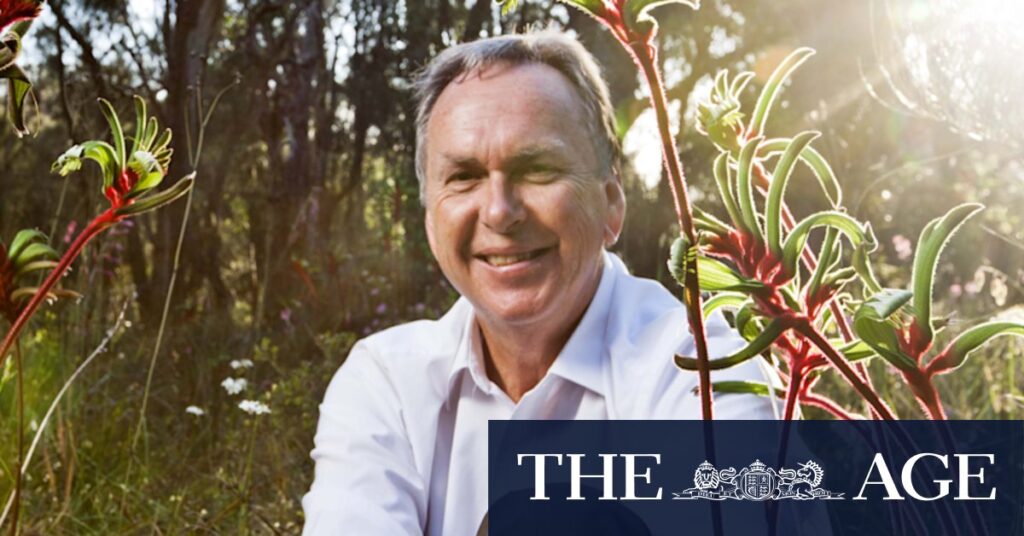
The scent of eucalypt trees has long inspired Stephen Hopper, a towering figure in the botanical world. Over the years, Hopper has dedicated his time to writing about this iconic genus from his wooden desk made of jarrah eucalypt, a timber he describes as “beautifully constructed and warmly red-brown.” His latest work, a book simply titled Eucalyptus, delves into the rich diversity of a genus he calls “the universal Australian.”
Albany, where Hopper resides, is home to a remarkable variety of eucalypts. Within walking distance from his house, unique shrubby gum trees thrive, while a short drive away, the golden-limbed karri eucalypts dominate the landscape. These species are unique to the south-west corner of Western Australia, an area known for its extraordinary concentration of eucalypts. Hopper’s extensive fieldwork and research have led him to identify over 100 eucalypt species, making him one of the most prolific botanists in this field.
From Local Roots to Global Recognition
Hopper’s reputation extends far beyond Australia. While living in Perth, he was recruited by the Royal Botanic Gardens in Kew, London, becoming its first non-British director. In his current role as a professor of biodiversity at the University of Western Australia, Hopper continues to contribute to scientific literature, focusing on both eucalypts and other native plants like the kangaroo paw.
His book, Eucalyptus, explores the genus’s 900 species, ranging from Tasmania’s towering stringy gum to the tiny mallees of Western Australia. Hopper notes that all but 12 of these species are native to Australia, thriving in all but the most arid regions. He writes, “The seeming uniformity of grey-green eucalypt canopies are a hallmark of Australia, belying and hiding a riot of diversity that requires a mature and perceptive eye to comprehend fully.”
“The universal Australian is a pariah in some countries that introduced fast-growing eucalypts to solve environmental problems, only to create others, such as becoming weeds.”
Scientific Advancements and Indigenous Knowledge
The number of recognized eucalypt species has grown from 850 to over 900, thanks to advancements in DNA testing. Hopper explains, “We’re applying second-generation DNA testing and finding that things that were previously regarded as sub-species are more appropriately full species.”
Hopper’s work also highlights the cultural significance of eucalypts to Indigenous Australians. His collaboration with Aboriginal colleagues, like Ronald “Doc” Reynolds, has enriched his understanding of the traditional uses of eucalypts. Reynolds recounts how eucalypt leaves were used to heal burns, a testament to the plant’s medicinal properties.
Hopper’s book dedicates significant attention to the Aboriginal knowledge of eucalypts, which he believes deserves special recognition. He states, “With the richest concentration of eucalypts on the continent, south-west Australia has an extraordinary Nyoongar Aboriginal oral tradition pertaining to eucalypts.”
Global Impact and Historical Context
The historical journey of eucalypts is as fascinating as their biological diversity. Seeds from the stringybark were first delivered to Kew Gardens in 1773, and since then, eucalypts have been planted worldwide. Hopper traces the global spread of eucalypts, from India to Europe and the United States, where they became integral to various industries.
Despite their global proliferation, eucalypts face significant threats in their native Australia. Nearly a quarter of known species are threatened with extinction due to climate change and habitat loss. Hopper emphasizes the importance of conservation efforts, writing, “The world today cannot survive without eucalypts. Their utility is unquestionable, for beekeepers or the pharmacy, the timber yard or the trade in fine furniture.”
“Even the paper in the books and printers that remain so important to modern life comes from the fibres of woodchips from Tasmanian blue gum.”
Looking Ahead: A Legacy of Conservation
Hopper’s work is not just about documenting the past but also about shaping the future. His efforts aim to raise awareness about the ecological importance of eucalypts and the need for their preservation. He hopes his book will contribute to the reparation of damage done to eucalypt woodlands and forests, offering a vision for a sustainable future.
Reflecting on his career, Hopper remains committed to his work in Australia, valuing its rich biodiversity and cultural significance. He concludes, “These days, I’m sure I could stop anywhere and find something with abundant cultural significance, and perhaps even a new species.”







